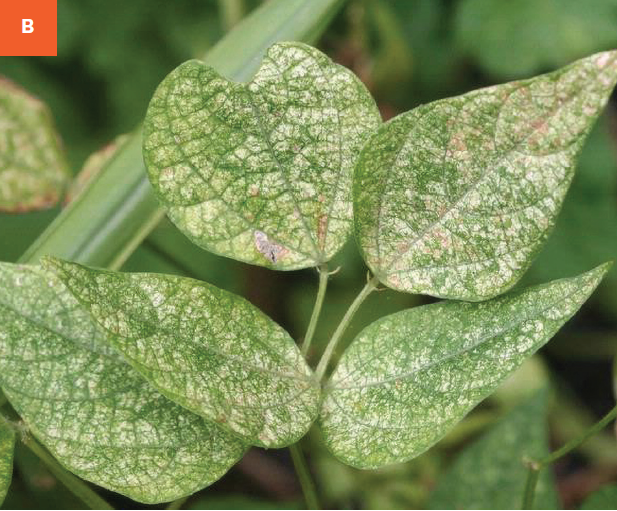Two-Spotted Spider Mite
Tetranychus urticae
HOST Wide range of deciduous trees, shrubs
DAMAGE/SYMPTOMS The spider mites pierce plant cells and suck the sap out, causing flecking injuries and yellowing. They also cause premature leaf drop. Leaves will start to look wilted, and heavy infestations can cause serious damage to plants.
LIFE CYCLE The spider mites typically overwinter under debris near host plants. Mites reach adulthood in about 10 days, and females can lay up to 60 eggs in two to three weeks. They seek shelter later in the summer and cease feeding activity.
MANAGEMENT Populations of spider mites increase with dryness and warm temperatures. Minimize drought by spritzing plants frequently. If chemical control is necessary, miticides, horticultural oil, neem oil, and insecticidal soap will minimize damage to the natural enemies of spider mites, which are important for spider mite control. Spider mites are resistant to many insecticides, and broad-spectrum insecticides should be avoided due to the killing of beneficial insects and other arthropods.
A Adult spider mites. B Spider mite damage on bean leaves.


